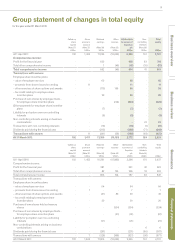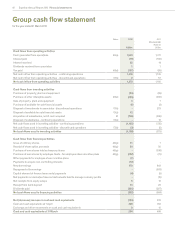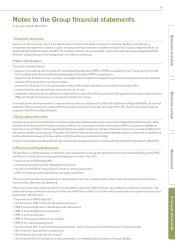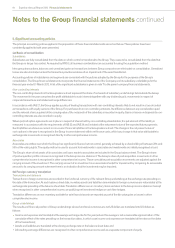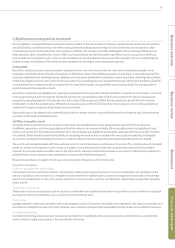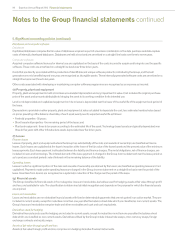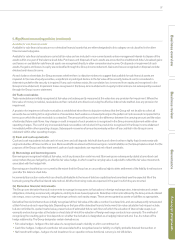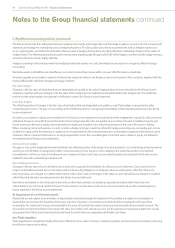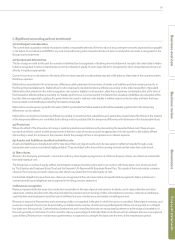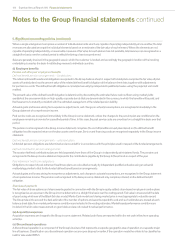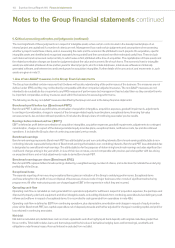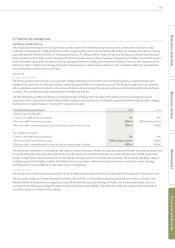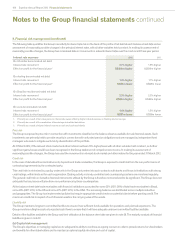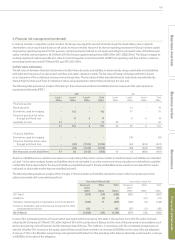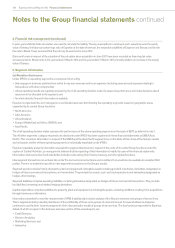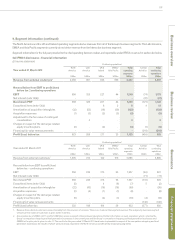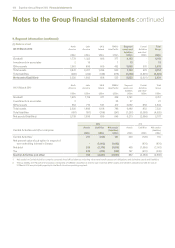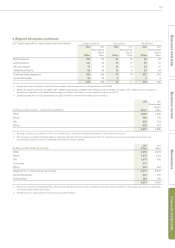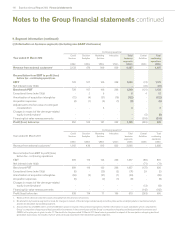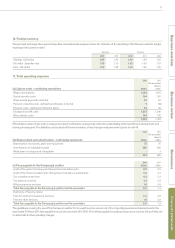Experian 2012 Annual Report Download - page 103
Download and view the complete annual report
Please find page 103 of the 2012 Experian annual report below. You can navigate through the pages in the report by either clicking on the pages listed below, or by using the keyword search tool below to find specific information within the annual report.
101
Governance Financial statementsBusiness reviewBusiness overview
6. Critical accounting estimates and judgments
(a) Critical accounting estimates and assumptions
In preparing the Group financial statements, management is required to make estimates and assumptions that affect the reported amount
of revenues, expenses, assets and liabilities and the disclosure of contingent liabilities. The resulting accounting estimates, which are based
on management’s best judgment at the date of the Group financial statements, will, by definition, seldom equal the related actual results. The
estimates and assumptions that have a significant risk of causing a material adjustment to the carrying amounts of assets and liabilities within
the next financial year are discussed below.
Tax (note 15)
The Group is subject to tax in numerous jurisdictions. Significant judgment is required in determining the related assets or provisions as there
are transactions in the ordinary course of business and calculations for which the ultimate tax determination is uncertain. The Group recognises
liabilities based on estimates of whether additional tax will be due. Where the final tax outcome of these matters is different from the amounts
that were initially recognised, such differences will impact on the results for the year and the respective income tax and deferred tax assets or
provisions in the year in which such determination is made.
Goodwill (note 20)
Goodwill is allocated to CGUs and monitored for internal management purposes by operating segment. The allocation is made to those CGUs
or groups of CGUs that are expected to benefit from the business combination in which the goodwill arose.
The Group tests goodwill for impairment annually or more frequently if events or changes in circumstances indicate that the goodwill may be
impaired. The recoverable amount of each CGU is generally determined on the basis of value-in-use calculations which require the use of cash
flow projections based on financial budgets approved by management, looking forward up to five years. Management determines budgeted
gross margin based on past performance and its expectations for the market development. Cash flows are extrapolated using estimated
growth rates beyond a five year period. The growth rates used do not exceed the long-term average growth rate for the markets in which the
segment operates. The discount rates used reflect the segment’s pre-tax weighted average cost of capital (‘WACC’).
Fair value of derivatives and other financial instruments (note 31)
The fair value of derivatives and other financial instruments that are not traded in an active market (for example, over-the-counter derivatives) is
determined using valuation techniques. The Group uses its judgment to select a variety of methods and makes assumptions that are mainly
based on market conditions existing at each balance sheet date.
The assumptions in respect of the valuation of the put option associated with the remaining 30% stake in Serasa are set out in note 8.
Share-based payments (note 33)
The assumptions used in determining the amounts charged in the Group income statement include judgments in respect of performance
conditions and length of service together with future share prices, dividend and interest yields and exercise patterns.
Pension benefits (note 34)
The present value of the defined benefit assets and obligations depends on factors that are determined on an actuarial basis using a number
of assumptions. The assumptions used in determining the defined benefit assets and obligations and net pension costs include the expected
long-term rate of return on the plan assets and the discount rate. Any changes in these assumptions may impact on the amounts disclosed in
the Group financial statements.
The expected return on plan assets is calculated by reference to the plan investments at the balance sheet date and is a weighted average of the
expected returns on each main asset type based on market yields available on these asset types at the balance sheet date.
The Group determines the appropriate discount rate at the end of each year. This is the interest rate used to calculate the present value of
estimated future cash outflows expected to be required to settle the defined benefit obligations. In determining the discount rate, the Group
has considered the prevailing market yields of high-quality corporate bonds that are denominated in the currency in which the benefits will be
paid, and that have terms to maturity consistent with the estimated average term of the related pension liability. In determining the discount
rate, management has accordingly derived an appropriate discount rate by consideration of an AA rated corporate bond yield curve and the
estimated future cash outflows.
Other key assumptions for defined benefit obligations and pension costs are based in part on market conditions at the relevant balance sheet
dates and additional information is given in note 34.
(b) Critical judgments
Management has made certain judgments in the process of applying the Group’s accounting policies that have a significant effect on the
amounts recognised in the Group financial statements. These judgments include the classification of transactions between the Group income
statement and the Group balance sheet.


